It’s time for another installment of Gotham Calling’s journey through Cold War cinema! Mixing classics with lesser-known gems, the selection below oscillates between the Cold War’s domestic, geopolitical, and fully global stakes, as the conflict’s effects are shown threatening both individuals and the planet at large.
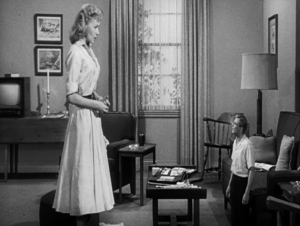
31. The Incredible Shrinking Man (USA, 1957)
Along with its eye-catching take on the themes of emasculation and acceptance of mortality, The Incredible Shrinking Man excels in the original way it hops from one genre to the next every few minutes, gently flowing from weird humor to heartfelt drama and kickass thrills. The result is by far the best of the 1950s’ cycle of Hollywood movies about human mutations, arguably informed not only by growing concerns over the effects of nuclear radiation, but also by a society changing in unpredictable directions that threatened the idealized suburban lifestyle of Eisenhower America. (The Cold War link was made more explicit in The Amazing Colossal Man, which reverses this film’s premise, but that one is much schlockier, if charmingly so.)
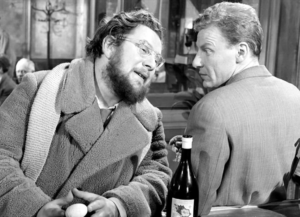
32. The Spies (France/Italy, 1957)
Encroaching secrecy, surveillance, and psychological warfare come off as both unnerving and absurd in this darkly surreal entry about a doctor at a French psychiatric hospital who starts to suspect most people around him might be secret agents. In contrast to Europe ‘51, in The Spies the cold warriors are the ones who become literally indistinguishable from mental patients.
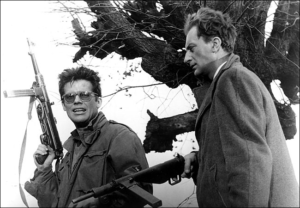
33. Ashes and Diamonds (Poland, 1958)
An astonishing historical drama/thriller/romance set in Poland immediately after World War II. The text concerns the Soviet occupation, the subtext concerns the ensuing Polish resentment, and the context is a period of relative liberalization enabled by the death of Stalin which allowed filmmakers like Andrzej Wajda to break a number of taboos. I’ve also written about Ashes and Diamonds here. (Wajda would go on to direct committed indictments of Polish politics, including the semi-satirical divorce drama Without Anesthesia and the allegorical Man of Marble/Man of Iron saga, so this entry serves to represent a larger strand of Polish oppositionist cinema…)
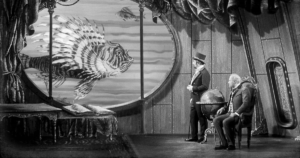
34. Invention for Destruction, aka A Deadly Invention (Czechoslovakia, 1958)
Gorgeously combining live action with different forms of animation, this retrofuturistic pirate adventure is set in some kind of alternate steampunk era (it’s a tribute to Jules Verne), but there’s no mistaking the implications of the super-weapon at the core of Invention for Destruction.
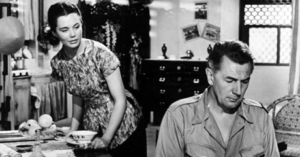
35. The Quiet American (USA, 1958)
The fact that The Quiet American is a noirishly shot drama set in 1952 Indochina amidst the French war against communist insurgents could be enough to earn it a place on this list. Yet this is another case where the film’s background further elevates its relevance, as writer-director-producer Joseph L. Mankiewicz drastically revised the politics of Graham Greene’s novel in order to save the face of US interventionism abroad (which is especially ironic given what was about to happen in Vietnam…). Thus, every line thrown against the protagonist feels like Mankiewicz lambasting Greene! (Scholar Adam Piette adds yet another layer by arguing that Greene’s original text was also a veiled criticism of the British policy of using the Cold War to crush the independence movements in Malaysia.)
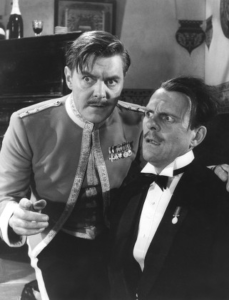
36. Carlton-Browne of the F.O., aka Man in a Cocked Hat (UK, 1959)
Parodying the onset of geopolitical competition over the Third World, in Carlton-Browne of the F.O. bumbling British diplomats try to deal with Soviet activity in a former colony whose existence they hardly remembered. Luckily, they forgot to notify their local representative of the place’s independence, decades ago, so he’s still there, completely unaware…
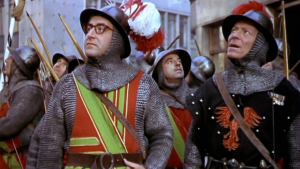
37. The Mouse That Roared (UK, 1959)
More farce with a British accent. In The Mouse That Roared, a tiny European nation declares war on the United States (in the hopes of getting Marshall aid) and ends up messing with the whole international order… I prefer the source novel, but the film has its own merits, including a triple performance by Peter Sellers that anticipates Dr. Strangelove. (Similar hit-and-miss comedies followed, in the same political spirit, including a direct sequel – the Sellers-less The Mouse on the Moon – and the Shakespearean Romanoff and Juliet, but your mileage may vary on whether you find them grating or endearing.)
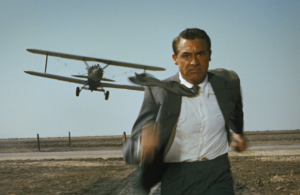
38. North by Northwest (USA, 1959)
A different sort of satire, in a way. In Alfred Hitchcock’s playful – yet seminal – spy flick North by Northwest, an advertising executive gets mistaken for a secret agent… and it’s no wonder, since with so many games of smoke & mirrors even the actual spies are bound to get confused every once in a while. So far, most thrillers on this list have owed a lot to film noir, but this is a more modern-looking approach to the material, inaugurating a new type of cosmopolitan businessman adventure.
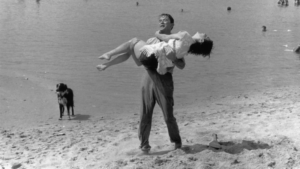
39. On the Beach (USA, 1959)
In the notoriously bleak On the Beach, nuclear war has wiped out most of the planet except for Australia, so we get to follow the last humans on Earth as they wait for the radiation to catch up with them. While this was certainly not the first Cold War film to explore the eerie prospect of global destruction, empty streets, and isolated survivors (that would be 1951’s artsy B-movie Five), it was arguably the first to have a major impact, resonating on public debates – and future productions – for years to come. (Director Stanley Kramer went on to further thematize the Cold War in the 3-hour epic courtroom drama Judgement at Nuremberg, but there this was mostly done through eloquent dialogue, whereas On the Beach makes a more powerful use of original images – and the sheer absurd of the situation – to drive its point home.)
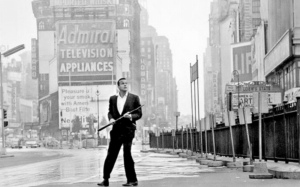
40. The World, the Flesh and the Devil (USA, 1959)
My favorite take on post-apocalyptic cinema in this period, though, is this more minimalistic – if sturdily shot – story in which Harry Belafonte wanders through a quasi-empty world, doing what he pleases (for a while, at least), as if only the entire end of civilization may free an American black man from racial discrimination… One of the reasons I’m such a sucker for 1950s’ doomsday fiction (it doesn’t even have to be particularly well-written, as long as it’s packed with stimulating ideas, like the novels The Death of Grass or I am Legend) is the glaring contrast between visions of the future that are still recognizable today (large-scale war, environmental catastrophes, pandemics, social breakdown) and the era’s more dated, conservative values, which are simultaneously reaffirmed and challenged by the new contexts (starting with an indictment of the authorities’ very failure to prevent collapse: just check out all the lingering posters in the background ironically mocking the limits of civil defense in the nuclear age). Some critics have taken issue with the film’s ending, but I like how its ambiguity suggests the possibility of truly reinventing human relations beyond the conventional Adam & Eve formula. All in all, The World, the Flesh and the Devil feels like the closest we’ve gotten to an EC comic on the big screen.
